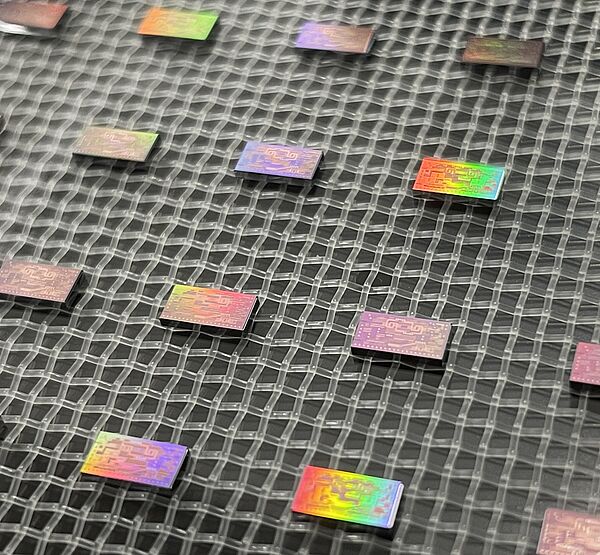The QOSiLICIOUS consortium is pleased to announce the official launch of its international research initiative, funded under the European Innovation Council (EIC) Pathfinder program. The project is set to begin on February 1, 2025, marking a significant step toward advancing Quantum Key Distribution (QKD) through an all-silicon approach that enables highly miniaturized and cost-efficient QKD solutions. Quantum Key Distribution (QKD) uses the principles of quantum mechanics to secure communication. The keys for decoding information are sent using photons or quantum light particles. Any attempt to intercept these quantum keys interrupts their state and warns users of possible eavesdropping. This technology ensures fundamentally secure data exchange. QKD represents the pinnacle of cyber security as an important future security barrier against emerging quantum computers that will render today's encryption concepts obsolete. Andreas Kugi, Scientific Director, AIT Austrian Institute of Technology: “Quantum key distribution (QKD) is a key technology for the long-term protection of our digital (critical) infrastructure. With QOSiLICIOUS, we are taking a decisive step towards making quantum communication suitable for the mass market: by integrating it into silicon-based technology, we can reduce costs and enable broad scaling. This lays the foundation for Europe to play a leading role in the secure communication of the future.”
QOSiLICIOUS aims to develop an optically active, all-silicon QKD solution that eliminates the need for rare semiconductor materials, addressing key challenges in chip-scale QKD assembly. This approach is expected to drive a paradigm shift by significantly simplifying the integration of QKD into microelectronic systems, facilitating its widespread adoption as a standard component of a secure communication infrastructure. The project envisions QKD as a transformative solution for the Information and Communication Technology (ICT) sector, offering Information-Theoretically Secure (ITS) encryption in applications where conventional security primitives remain vulnerable.
QOSiLICIOUS’ long-term vision is to integrate QKD on an all-silicon basis, which enables its seamless and cost-efficient integration in last-mile networks and handheld devices such as smartphones. As the era of quantum computing approaches, this technology will help to mitigate cyber threats to the increasingly interconnected ICT infrastructure that underpins modern personal and professional communications.
The QOSiLICIOUS consortium is led by quantum technology expert Mariana Ramos at AIT Austrian Institute of Technology. Other partners in the project include: Nvidia (Israel), IHP – Leibniz Institute for High Performance Microelectronics, and the University of Glasgow. The project was funded in the highly competitive EIC Pathfinder programm and receives €3.4Mn funding from the European Innovation Council under the Horizon-Europe framework, reinforcing the EU’s commitment to advancing quantum communications and ensuring the security of digital infrastructure. "Although chip-based quantum systems have already been successfully demonstrated, their complexity and high cost remain significant barriers to widespread adoption, a challenge that we want to solve in this new project," says Ramos.
The kick-off meeting took place on the February 17-18 at the AIT headquarters in Vienna, and brougth together leading researchers and industry experts from the wider European region.
About AIT Austrian Institute of Technology
The AIT has about 1.500 employees working on the development of the tools, technologies and solutions for Austrian industries that are of utmost relevance for the future. As Austria’s largest non-university research institute, AIT, is at the forefront of industrializing quantum communication. Building on Nobel laureate Anton Zeilinger’s pioneering work, AIT has become a leader in quantum cryptography, advancing terrestrial and satellite-based communication technologies.
AIT plays a significant role in the European Quantum Flagship program and the EuroQCI initiative, focusing on creating high-security quantum infrastructure across the EU.
The research in QOSiLICIOUS complements this expertise through its focus on miniaturizing the devices required for quantum communication. Further current projects are including QCI-CAT and PETRUS, which are critical to developing Europe’s next-generation quantum communication networks. QCI-CAT is driving forward the development of a quantum communication infrastructure for highly secure government applications in the EU and implementing specific applications in Austria. In this context, the AIT is also working at the national level on projects such as QKD4GOV on quantum-safe cryptography for the transmission of confidential information between authorities as part of the national KIRAS funding programme for security research, which is funded by the Austrian Federal Ministry for Finance (BMF). The PETRUS project aims to establish a European cyber defence shield over the next ten years based on a quantum communication infrastructure consisting of terrestrial and satellite-based solutions. Furthermore, AIT plays a major role in the Nostradamus initiative which has also been commissioned by the European Commission to build a testing infrastructure for quantum key distribution (QKD) in Europe. This will enable the evaluation of European manufacturers’ QKD devices.
Further information:
- AIT research group Enabling Digital Technologies: https://www.ait.ac.at/edt
- Quantum Flagship – EuroQCI Initiative: https://qt.eu/ecosystem/quantum-communication-infrastructure
- PETRUS: https://petrus-euroqci.eu/
- Project Open QKD: https://openqkd.eu/
- Project QCI-CAT: https://qci-cat.at



